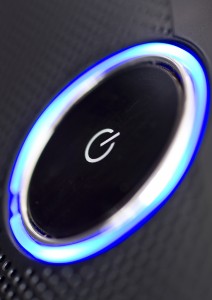This post originally appeared in the Carbon Talks blog.
I admit it, I don’t look too closely at my electricity bill. It always seemed to me to be an esoteric jumble of rates, charges, definitions, and explanations. As long as the dollar figure didn’t climb too high, it didn’t bother me much. However effort to save electricity translates directly into cost savings, not to mention possible emissions reductions, no matter how small. It’s hard to argue with a virtuous act that also saves me money.
A typical electricity bill will tell you the number of kilowatt-hours that you used during the billing period (or an estimate of that number, based on previous patterns of usage), along with a rate. But what does that really mean? What is a kilowatt-hour? How much electricity do my various appliances and habits use? If I wanted to decrease that amount, what’s the most efficient way to do so? To answer these questions, we need a little bit of math.
In the context of electricity, the basic unit of measurement for energy is the kilowatt-hour (kWh) – if you use 1000 watts in one hour, then you’ve used one kilowatt-hour. A kilowatt is one thousand watts, and a watt itself is a measure of power – that is, how much energy is used over a certain period of time. To put things in perspective, one kWh equals approximately 3.6 million joules, or approximately 860 nutritional calories; that’s just over a dozen apples.

So how many apples of electricity do I use per month? To determine how much electricity a particular appliance or piece of equipment is using, first you need to determine its wattage. Most of us grew up with typical incandescent light bulbs, and those almost always have the wattage printed directly on the bulb; an average bulb may be 60 to 100 watts. Let’s say you use the bulb for roughly five hours per day; over the course of a month, this would add up to approximately 150 hours. We then divide 150 hours by the wattage of the bulb (let’s say it’s 60 watts), working out to 2.5 kilowatt-hours (or thirty apples, for those of you still counting in fruit). Larger appliances like a refrigerator may use 50-160 watts on average, yet spike to 700 watts when the compressor is running. An average window unit air conditioner runs somewhere around 1000 watts. An electric water heater can draw a remarkable 3800 watts.
Sometimes your device doesn’t list wattage, but only amperage and voltage. In this case, you’ll need to multiply these two numbers together. For example, my laptop draws 3.65 amps at 16.5 volts, which works out to about 60 watts. This is the maximum draw, however, and when your laptop is sitting idle or sleeping it could be significantly less.
Standby power, or the more romantically descriptive “vampire power”, is electricity consumed by an appliance when it’s plugged in, but not necessarily turned on. This includes not only a laptop, but also devices like a charging phone, an idle stereo system, or even the clock on the microwave.
In 1999, the International Energy Agency launched the One Watt Initiative with the goal of ensuring that all new appliances sold by 2010 would use only one watt in standby mode. Governments followed their lead, and in 2007 California enacted appliance standards limiting standby power to just 0.5 watts. In 2010 The European Commission put into force a regulation limiting regular standby power to 1 watt, and standby for any equipment that is displaying information or status to 2 watts.
In Canada, we are phasing in our own specific regulation on standby power; Natural Resources Canada estimates that we use between 5 and 6 terawatt-hours of standby power per year. That’s 5.5 billion kWh, or… 460 million apples.
The question of electricity cost is complicated, and depends on a number of factors not limited to where you live. The time of day, your peak usage, tiered pricing, and demand charges can all drastically affect the cost you’re paying per kilowatt-hour. Here in British Columbia, we pay based on what’s called a “stepped rate” system whereby we pay 6.8 cents per kWh for the first 1,350 kWh, and then 10.19 cents per kWh above that threshold. BC Hydro suggests that this system encourages conservation, and argues that the 10.19 cents rate is a more realistic charge for current sources of electricity.

Now that we know how to calculate our energy usage, and how much it costs, we can think about how to bring those numbers down. Last month I used approximately 420 kWh, and so I’m on the hook for about $28 – I live alone, with heating and hot water provided by my building, so this number doesn’t accurately reflect my total home energy footprint. But how can I decrease the amount of that electricity that I do personally pay for? I could turn down the fridge, as it’s probably too cold. I could use the microwave more often, instead of the electric stove. I could use standby power conservation sockets for my computer, phone, and other electronics. And of course I could simply use less water, lighting, and heat.
These are relatively easy things to do, yet how we can take personal responsibility for shifting Canada to a low-carbon economy is something most of us are likely to ignore, purposefully or otherwise. Things like carbon taxation and legislated emissions reduction targets will happen despite our habits. Other strategies, like a home energy retrofit, increased reliance on public transportation, and greater consumption of local food, rely on a combination of market forces that make a choice economical and desirable by default. However the smallest things we can do are at home, and those things will save both energy and money. With a bit more effort at conservation, I could save myself 1200 kWh per year. That may not seem like a whole lot, but it’s the equivalent of over 14,000 apples. That’s a lot of fruit.
(Icon photo courtesy of Brendan Wood/Flickr, power button photo courtesy of Carl Smith, apples photo courtesy of diebmx/Flickr)

